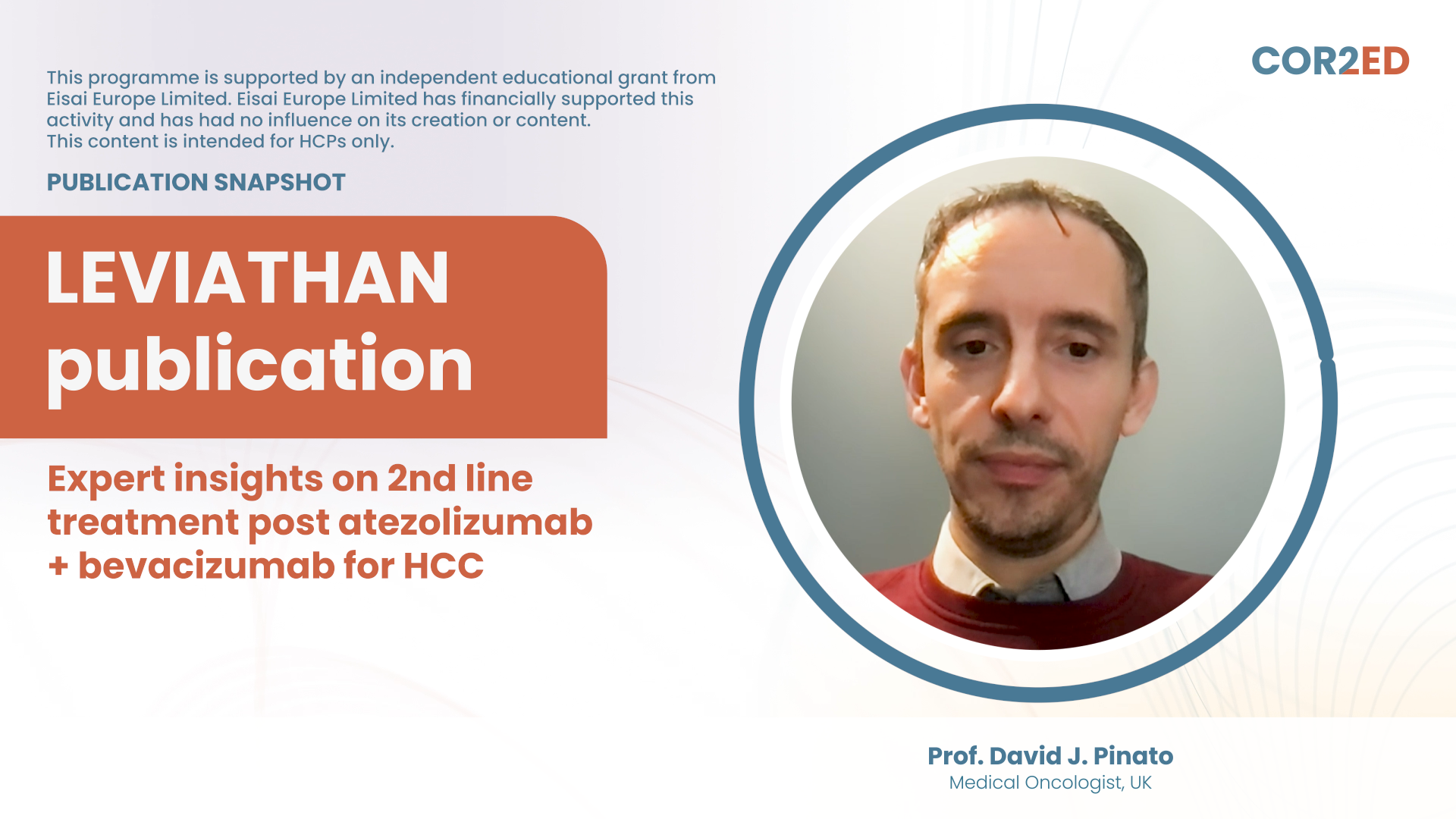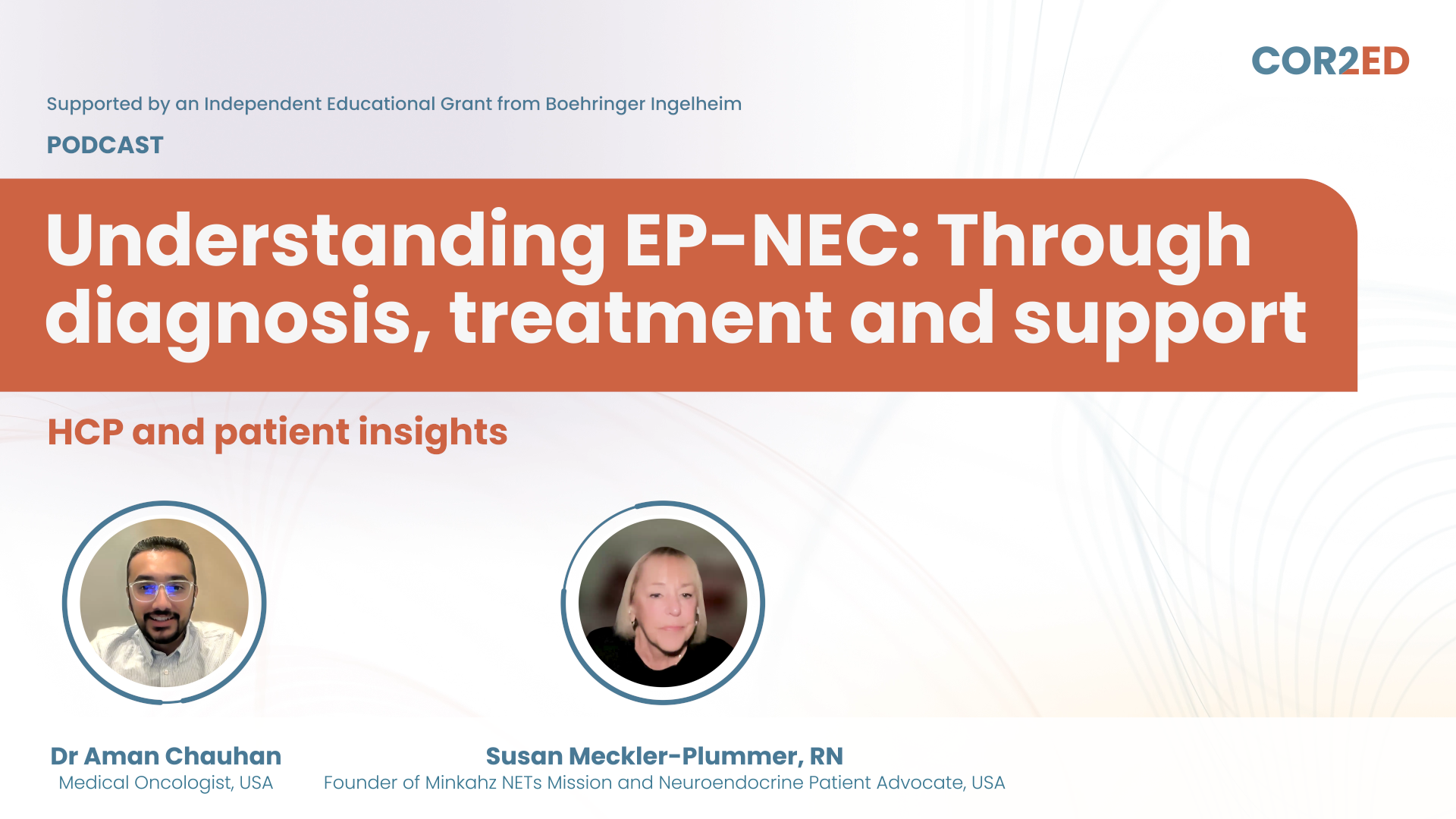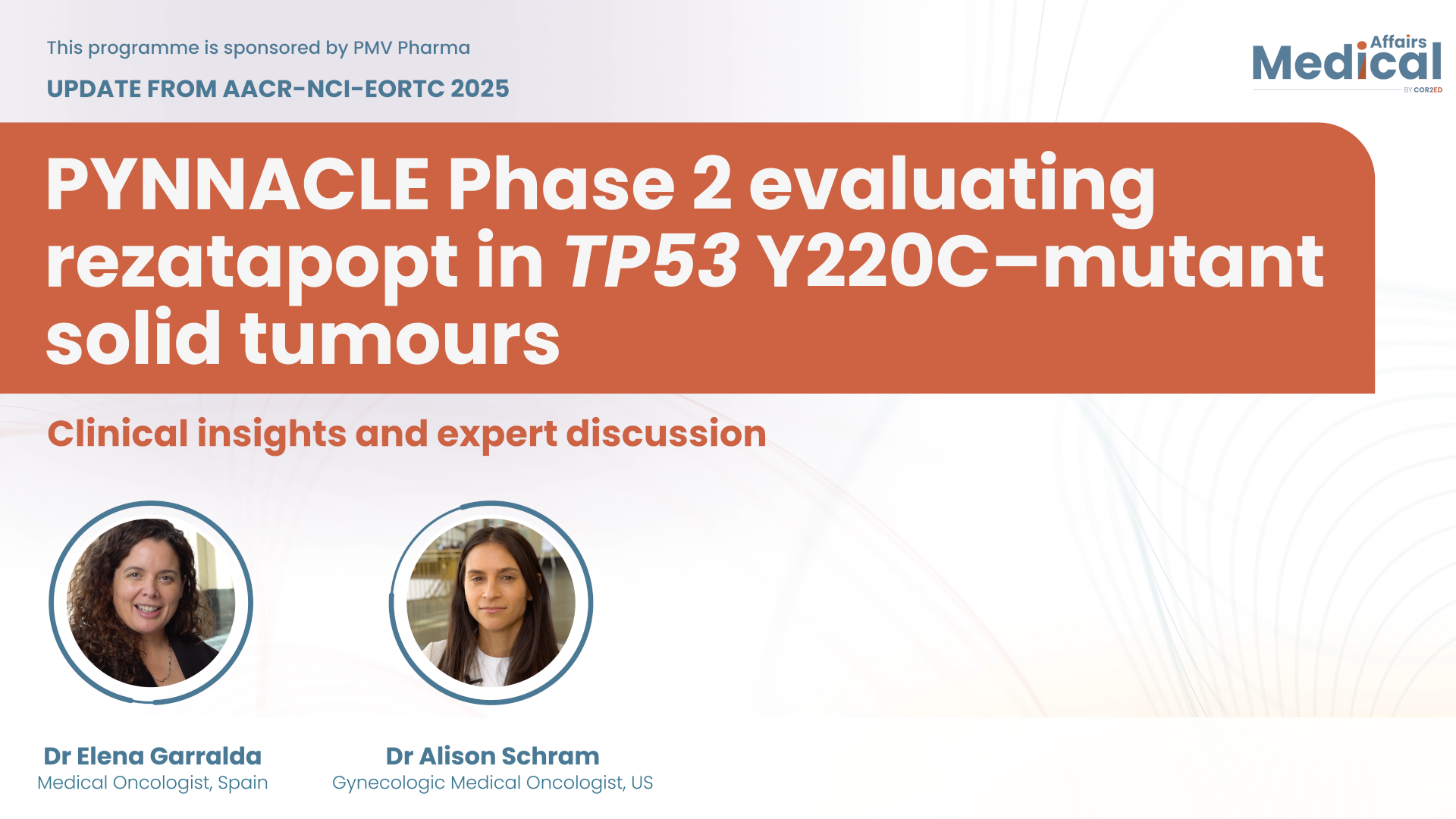Moderated by:
Drs Rahul and Rohit Gosain, the Oncology Brothers.
Brought to you by:
Dr Martina Murphy, Medical Oncologist and Associate Professor of Medicine, University of Florida, USA.
Dr Caterina Marchiò, Associate Professor of Pathology, Candiolo Cancer Institute FPO-IRCCS, University of Turin, Italy.
Introduced by:
Tonke de Jong, COR2ED.
Please note:
PRECISION ONCOLOGY CONNECT podcasts are designed to be watched and/or heard. If you are able, we encourage you to listen to the audio, which includes emotion and emphasis that is not so easily understood from the words on the page. Transcripts are edited for readability. Please check the corresponding audio before quoting in print.
This podcast is an initiative of COR2ED and developed by PRECISION ONCOLOGY CONNECT, a group of international experts working in the field of precision oncology. The podcast is supported by an independent educational grant from AstraZeneca and Amoy Diagnostics.
The views expressed are the personal opinions of the experts. They do not necessarily represent the views of the experts' institution, or the rest of the PRECISION ONCOLOGY CONNECT group.
For expert disclosures on any conflict of interest please visit the COR2ED website.
Tonke de Jong (COR2ED)
Pre-analytical phase challenges account for the majority of variability in the analytical workflow with the potential to impact biomarker test results and patient safety, and to increase the cost burden for laboratories. It's important to highlight where pre-analytical challenges can have an impact and how to address them.
This is the final podcast episode in a three-part series on pre-analytical phase challenges in biomarker testing. In this episode, we focus specifically on ovarian cancer.
This podcast is an initiative of COR2ED and supported by an Independent Educational grant from AstraZeneca and Amoy Diagnostics. COR2ED is honoured to introduce to you the Oncology Brothers, Drs Rahul and Rohit Gosain, moderators of today's discussion, Dr Caterina Marchiò, pathologist and Associate Professor at the Candiolo Cancer Institute, and Dr Martina Murphy, oncologist, and Associate Professor at the University of Florida.
Dr Rahul Gosain (Oncology Brothers)
Hello everyone. I am Rahul Gosain.
Dr Rohit Gosain (Oncology Brothers)
And I'm Rohit Gosain.
Dr Rahul Gosain (Oncology Brothers)
And we are the Oncology Brothers. As a general medical oncologist, we have to keep up with all that is happening around us in haematologic and solid malignancies. With close to 20,000 new diagnoses here in the US and more than 300,000 new cases worldwide each year, ovarian cancer should be on our radar. To do better for our patients, it is important for us to appreciate all the pre-analytical phase challenges and biomarker testing in ovarian cancer. To cover this topic today, we are joined by Dr Martina Murphy, a medical oncologist, Associate Professor of Medicine, and Programme Director for the Fellowship Training program at the University of Florida, and Dr Caterina Marchiò, pathologist and Associate Professor at the Candiolo Cancer Institute in Italy. Martina and Caterina, welcome.
Dr Martina Murphy
Thank you so much for having us.
Dr Caterina Marchiò
Yes, absolutely. It's a great pleasure for us to be here with you today.
Dr Rohit Gosain (Oncology Brothers)
Martina and Caterina, thank you so much for again joining us. Martina, as a medical oncologist, before we even get the chance to discuss treatment options with our patients, there is quite a bit happening behind the scenes to make the right diagnosis. Accurate biomarker identification is paramount as it affects our treatment decisions. However, right from tissue collection to biomarker analysis, this is quite a challenging process which can impact diagnosis as well as treatment decisions. As we rely on germline and somatic mutations for treatment decisions. Before we go any further, Caterina, can you please clarify the difference between germline and somatic mutations?
Dr Caterina Marchiò
Absolutely, Rohit, I think it is a great way to start this discussion. As a matter of fact, we are dealing every day with diagnostics involving either germline or somatic mutations in two main genes: BRCA1 and BRCA2. So, it's good to start with definitions. When we talk about a germline mutation, it means that the DNA alteration has affected the germ cells, or reproductive cells, and as such is present in every cell of the body. The fact that the alteration is present from birth, because it is inherited from our parents, unfortunately increases the risk of developing ovarian cancer and breast carcinoma. On the other hand, a somatic mutation means that the DNA alteration has affected a cell after birth, because, for example, of environmental factors or exposure to various toxins. This type of mutation is restricted to tumour cells. In the end, we are interested in both germline and somatic mutations in BRCA1 and BRCA2 because, regardless of their origin, we know that if these mutations are present in a patient with ovarian cancer we have therapeutic options that Martina will discuss later.
Dr Rohit Gosain (Oncology Brothers)
Thank you so much, Caterina. Martina, anything that you would like to add from a clinical standpoint: do these mutations truly have any implications for our patients from a treatment standpoint?
Dr Martina Murphy
That's a fabulous question. And first, thank you so much for including me in this conversation. So as Caterina was starting to talk about, analysis of these tumour-specific biomarkers is really critical when it comes to informing us regarding potential targeted therapies for our patients with ovarian cancer. So, making sure that we're testing the right targets, that we're testing them accurately, and that we're ensuring accessibility for all our patients is critically important. To get to your question, I want to talk quickly about the key biomarkers of clinical relevance as it currently stands. Certainly, science is changing every day, but as it currently stands in ovarian cancer, we have BRCA1 and BRCA2 that Caterina mentioned. Germline testing for BRCA is really important in ovarian cancer. Also, somatic testing, but germline testing in particular because it informs not only treatment decisions for our patients but also potential risk reducing strategies for patients themselves and for their families. It's also become clear that there are other gene variants that are BRCA-like and that result in homologous recombination deficiency (HRD) and which are important to know about. In the big picture BRCA testing and HRD status are both important when it comes to determining eligibility for, and magnitude of benefit from, PARP inhibition following platinum-based chemotherapy. Another important and newer biomarker is the folate receptor alpha. Folate receptor alpha is present in about 35 to 40% of ovarian cancers. And when it's present, we do have a therapeutic target, with mirvetuximab soravtansine approved last year. It is an antibody drug conjugate that targets folate receptor alpha and it is a treatment option for women who have platinum-resistant ovarian cancer and whose tumours express folate receptor alpha. And then finally, immunotherapy is not a big player in ovarian cancer to date. But knowing mismatch repair (MMR) status is important in this patient population, especially for people who develop recurrent, platinum-resistant disease. If someone is deficient in mismatch repair, immunotherapy is certainly an option.
Dr Rohit Gosain (Oncology Brothers)
Martina, Caterina, thank you so much for covering that. Very recently we've also seen a broader guideline from ASCO when it comes to testing for these patients, more from the breast cancer side, but it is important for us to appreciate that looking for germline BRCA1 and BRCA2 mutations is important. And then again Martina, you've mentioned the folate receptor alpha, which is a very good example of a somatic mutation that we can go after.
A multidisciplinary approach is critical for all cancers. When it comes to ovarian cancer, even if it's advanced disease, surgery can play a big role in getting us bigger tissue sample or for debulking. Caterina, coming back to the biopsy, is initial fine needle aspiration (FNA) biopsy tissue enough, or do you have to go back for more testing on surgical specimen after the patient has undergone surgery?
Dr Caterina Marchiò
Well, for pathologists, the more the merrier! We are always asking more from our radiologists and surgeons. We are very happy to work with surgeons because it gives us the opportunity to have samples that are more cellular and more abundant in tumour cells. When we work with a surgical biopsy, we are much happier. Nevertheless, I would say that sometimes FNA or paracentesis can also be a source of tumour cells. In the end, we are interested in tumour cells when we do an NGS testing. So, even the pure cells that come from bodily fluids could be an option, especially when we have ascites. These could be a source of tumour cells that can be very abundant in terms of cellularity. Sometimes we may also have small biopsies taken via percutaneous way. We try to do our best from the tissue that we have since we don't want to distress the patient too much. In the end, it’s a matter of balance between what can be done for that patient and what can be obtained. I would say that having a good amount of tissue will guarantee that the workflow for the tissue specimen will be more successful. When we start profiling, for example with a NGS test, it will be a long journey, sometimes it takes weeks. We don’t want to fail at the very end because of an issue related to tumour cellularity. When we kick off the NGS testing, pathologists have to be sure that it is the right specimen, that it is at weight, that there is good tumour cellularity and that it is of good quality. A test may fail not just because there weren’t enough cells, but because the cells were not well preserved. So, in the context of this podcast to discuss the pre-analytical issues related to this type of specimen, preservation of tissue samples is very important.
Dr Rahul Gosain (Oncology Brothers)
Caterina, can you talk a little more about some key challenges that you might run into? Tissue collection, processing of the ovarian cancer tissue, and something for us to learn from that?
Dr Caterina Marchiò
Yes, indeed. When we talk about the types of samples, it's important to consider how we handle and manage them once we receive them. As pathologists, we typically receive samples from either the radiological suite or the surgical theatre. It's beneficial to maintain good communication with these departments to ensure a smooth workflow for transporting the samples. Quick transportation is crucial because we need to determine if the sample is fresh. If it is, immediate fixation is necessary, and fixation is extremely important in this context. We use formalin for fixation, ideally 10% neutral buffer formalin as recommended by guidelines for assessing various biomarkers in pathology, not just for ovarian cancer patients. We must ensure that fixation is done correctly, within the recommended time frame of between 6 hours and no more than 72 hours. For small specimens, a minimum of 6 hours is needed before checking, while larger specimens shouldn't exceed 72 hours. These guidelines are crucial because while formalin is essential for fixing the sample, it can also affect nucleic acids, such as DNA. Since we're discussing NGS testing, which involves sequencing DNA, it's important to note that formalin fixation can fragment DNA and cause alterations in its bases. Therefore, ensuring the proper length of fixation is essential to avoid problems like over-fixation or under-fixation, which can impact the results.
Dr Rohit Gosain (Oncology Brothers)
Martina, another tool at our disposal is liquid biopsy. Where do you see this getting fit in with the ovarian cancer? We tend to rely on this quite a bit for our other tumour samples, particularly for lung cancers, GI cancers.
Dr Martina Murphy
I'll tell you that this is a question that I get asked more and more in my own clinic by my patients, because patients certainly would love to not have to undergo an invasive biopsy if possible. And when it comes to surveillance of ovarian cancer, more tools at our disposal would be better. As of right now, liquid biopsy has not proven to be a great, reliable source of information for ovarian cancer. My hope is that that will change as we perfect our techniques and better understand what we need to be looking for in liquid biopsy. I think part of the issue with liquid biopsy in ovarian cancer is that ovarian cancer spreads a little bit differently than some of the other tumours in which liquid biopsy is beneficial. It certainly can and does spread hematogenously, but it also spreads just by sloughing of cancer cells into the peritoneal cavity. Therefore, it makes liquid biopsy a little bit less specific in ovarian cancer. And so far, it's not something that we use on a regular basis outside the context of a study or a clinical trial.
Dr Rohit Gosain (Oncology Brothers)
When you talk about tumour sloughing, any update from circulating tumour DNA? Especially when there is tumour sloughing, it'll be rather easier to hopefully pick that up if there is any tumour presence or rather absence.
Dr Martina Murphy
That's a reason why it would make sense that this is something that we could do. I think we're just still trying to perfect the technique and, again, understand exactly what it is that we're looking for and how that fits into the current treatment and surveillance algorithms. More to come I suspect, and, certainly, it's a thing that we would all love to have available rather than repeat biopsies.
Dr Rohit Gosain (Oncology Brothers)
And Caterina, as we're on this topic of solid or liquid biopsy, any regional or global differences that you're aware of when it comes to pre-analytical challenges or how these solid or liquid biopsies are processed?
Dr Caterina Marchiò
As Martina mentioned, liquid biopsy is currently not common practice, so let’s focus on tissue samples. These could be histological samples, but they could also be cytological samples, as I was mentioning before. Depending on the centre and depending on the habit of the surgeons and radiologists, there might be a different source for the tissue samples: either a surgical biopsy, a radiology-guided biopsy, or a peritoneal spread collected via paracentesis. Regardless of the source, it is a must to sequence BRCA1 and BRCA2. Since tumour cells can harbour either somatic or germline mutations, directly analysing tissue allows us to identify both types of mutations. First, we detect whether there is a BRCA1 and BRCA2 mutation because at this point, we have the possibility to treat the patient and that is what the patient needs first. Second, we deepen the analysis and look whether this is a germline or somatic mutation. If we detect that the mutation is germline, then we approach the relatives and do the cascade testing for the family and for the patient. Once we have BRCA1 and BRCA2 we are already far in our journey. In some institutions, we can do more than BRCA1 and BRCA2 testing by using a comprehensive genomic approach. We may do a panel testing of 50 to 500 genes and detect additional alterations that could be relevant for second- or third-line therapy. Variations in the amount of testing performed may exist among different institutions.
Dr Rohit Gosain (Oncology Brothers)
Now, bringing that information to our clinical space that is we have the BRCA mutation, somatic or germline, and we have the evidence of utilising PARP inhibitor in this space, Martina, any evidence for extending this indication to homologous recombination deficiency?
Dr Martina Murphy
It can get tricky, because of all the information we want to get, as well as the sequencing and timing involved. The guidelines from all national societies, such as ASCO, SGO, and IGCS, say that molecular testing in ovarian cancer needs to include, at the bare minimum, germline BRCA. Now, as Caterina said, we are also interested in somatic BRCA mutations and many of us will also get HRD testing for the reasons discussed earlier.
We used to sequence this in clinical practice. We used to do germline BRCA testing first and then, if that was negative, germline and HRD testing on the tumour itself. From a practical perspective, that’s not always realistic, and it can be logistically difficult to keep track of which patients had which testing and in what order. So, I think many of us in clinical practice will send germline panel testing as well as comprehensive genomic profiling using NGS at the time of diagnosis, recognizing that we’re probably not going to do anything with the NGS information right now but we want to have as much information as we possibly can moving forward with a patient. Now, from a clinical perspective, it's important that you know what is included on your NGS panel because there may be differences. For example, not every companies include folate receptor alpha. I think they all include HRD now, but that wasn’t always the case. So as a clinician, it is important to be aware of what is included, and more importantly of what you’re searching for and is not included, on the panel you’re sending.
Dr Rohit Gosain (Oncology Brothers)
Martina thank you for covering that. Is folate receptor alpha a resistant mutation or can we pick that up upfront? If we see progressive disease, is there any role in repeating NGS at the time of progression?
Dr Martina Murphy
Folate receptor alpha testing is either positive or not, so you can do that testing at the outset. Now, it’s a bit of a different question whether or not people need to have repeat NGS testing, and I genuinely don’t think there is a single right answer. In my view, it really depends on the clinical context. Not every patient, certainly not every patient who has had NGS testing at diagnosis, needs to have it repeated. Some of that depends if they had NGS testing to begin with and how long it’s been since their diagnosis - Caterina may speak to that. The other context in which I might repeat NGS testing is for a patients who hasn’t had NGS testing for a long time and for whom the initial testing didn’t really have any therapeutic targets present for potential clinical enrolment and have since developed platinum-resistant disease, ruling out mirvetuximab. In such cases, I would be particularly interested in repeating NGS to see if they have any mutations that are targetable just as is or that are opening up potential clinical trials opportunities. However, again, there isn’t one right answer.
Dr Rohit Gosain (Oncology Brothers)
Thank you. Caterina, from your standpoint, especially from the progression standpoint, does that make any difference on getting the tissue sample?
Dr Caterina Marchiò
As Martina was saying, and I fully agree with her, there isn't a right answer at the moment. We still don’t have much data and we need to get a little bit more into that. The decision to repeat testing also depends on the patient's clinical history. If there's an unexpected clinical course, it's always wise to retest if you have the possibility to collect additional tissue. So, right now, what I see most is comprehensive genomic profiling at the time of diagnosis when there is a good amount of tissue and the need to have detailed information to start treatment, with the additional information kept for later. If there is a new biomarker or target emerging, then testing - which may not be NGS testing as we need to remember that pathologies are multimodal - needs to be implemented according to the new evidence. Right now, I see a very good immunohistochemical profiling at the beginning because we need to define the histological type. We did not mention that, but we’re not doing this type of testing in any histological type of ovarian cancers. There is a plethora of histological types, and we are focusing on high-grade serous and the poorly differentiated carcinoma on which you cannot exclude a high-grade serous carcinoma.
So, first you need to label the tumour, then you go to NGS or this type of testing when it’s needed. If you can do a comprehensive genomic profiling, you can also gather more information that can be useful later on. And then, as Martina was saying, you stay updated and integrate testing when needed.
Dr Rohit Gosain (Oncology Brothers)
Thanks for covering that Caterina and Martina. Rahul, talking about the NGS testing, have you noticed any particular differences in clinical practice between community centres and if you were to compare this to academics? Personally, when we get these reports out in the community, I feel very overwhelmed. That has been the consensus throughout the community, and initially that's why people were rather hesitant in even ordering these reports.
Dr Rahul Gosain (Oncology Brothers)
A few things here. Caterina, you brought up that the first step is to figure out what histology we’re dealing with, with NGS being the secondary test. Both are important, but establishing the main diagnosis and then moving to another tool is what I want to emphasize.
In my clinical practice, we partner with third parties to do comprehensive testing such as NGS, because in-house testing in the community is more spot testing. And, as Martina mentioned, logistically, practically, it ends up being tough to go back and repeat one more test or look for resistant mutation or this or that. So, at least in my practice, I rely on this comprehensive testing panel.
With regards to these reports being cumbersome, dissecting all the data on these reports can be overwhelming. In my practice I send this report for ovarian cancer, but we also have information for HRD and somatic mutations as we also have data for prostate cancer on there. So, we have to keep up with all that is available, and it is so important to dissect these cumbersome, heavy reports.
Dr Martina Murphy
And that's such a good point because patients also get these reports. It's wonderful that with the technology that we have, patients are getting more access to their medical information. I think generally speaking it’s fabulous. These reports can be overwhelming and cumbersome to us as clinicians, so when patients get hold of these, it can also be very challenging for them. We have to spend a lot of time in our visits, rightly so, to educate our patients and their families and caregivers on what these tests mean. This is an important point I wanted to make.
Dr Rohit Gosain (Oncology Brothers)
I couldn't agree more, Martina. It is overwhelming for us, so, it’s certainly very overwhelming from the patient perspective. So, comprehensive testing, at least here in USA, is a better approach, not only for ovarian cancer, but for all or most of our patients, especially when you talk about personalised medicine for so many basket approvals. As we're nearing the end, Caterina, any last few words for our listeners on this topic?
Dr Caterina Marchiò
What I always talk about when we discuss comprehensive genomic profiling, NGS testing, or panel size, is the amount of information that we get out of these tests. The more information you look at, the higher the complexity - and you need to handle this complexity. It’s always a teamwork. It’s good that today, for instance, there is an oncologist and a pathologist. I think these are two key figures who need to be present in our multidisciplinary meetings, but a geneticist and a bioinformatician are also needed. I think that it’s good to share the doubts, to discuss the interpretation of the results, also because it helps when we talk to our patients, and I guess Martina knows that very well. So, we need to be communicative, and do the right job in terms of delivering the right information at the right time in order to make the patient aware of their disease and the options. So, I would say let’s always team up, especially in this very complex scenario.
Dr Rohit Gosain (Oncology Brothers)
I couldn't agree more, especially when you talk about multidisciplinary approach. All this has implications for prognosis, treatment decisions for the patients and for their families. Martina, any last thoughts on what we have covered or what we might have missed here?
Dr Martina Murphy
Well, I'll just echo what Caterina said. One of the reasons why many of us went into oncology has to do with the fact that it is a multidisciplinary field. This is becoming more and more important as the science grows and the amount of knowledge that we are responsible for grows. The key takeaway point I want to make is that obviously it’s very important for us to understand what the key biomarkers are in ovarian cancer and how they’re clinically relevant, but I think it’s really important that we work, at the clinician and healthcare system level, to ensure equitable access to all of this specialised testing across the board. No matter where a patient comes from, they need to get high quality care for all cancer types, and certainly in the context of ovarian cancer.
Dr Rohit Gosain (Oncology Brothers)
Yes, indeed. Caterina and Martina, thank you so much for covering this critical topic of pre-analytical phase challenges and biomarker testing and its implications in our day-to-day practice, particularly in ovarian cancers. For our listeners, please make sure to check out our prostate cancer and lung cancer discussion in this space. We are the Oncology Brothers.
Tonke de Jong (COR2ED)
Thank you so much for listening to this podcast on pre-analytical phase challenges and biomarker selection in ovarian cancer. If you like this episode, then please look for the other episodes in this series on the Oncology Medical Conversation podcast under the account of COR2ED Medical Education, where we discuss pre-analytical phase challenges and biomarker testing for lung and prostate cancer. If you're interested in finding out more about precision oncology, then please visit cor2ed.com and select oncology. If you like this podcast, then don't forget to rate this episode or inform your colleagues about it. Thank you for listening and see you next time. This podcast is an initiative of COR2ED and developed by PRECISION ONCOLOGY CONNECT, a group of international experts working in the field of oncology. The views expressed are the personal opinions of the experts. They do not necessarily represent the view of the experts’ organisations, or the rest of the PRECISION ONCOLOGY CONNECT group. For expert disclosures on any conflict of interest, please visit the COR2ED website.


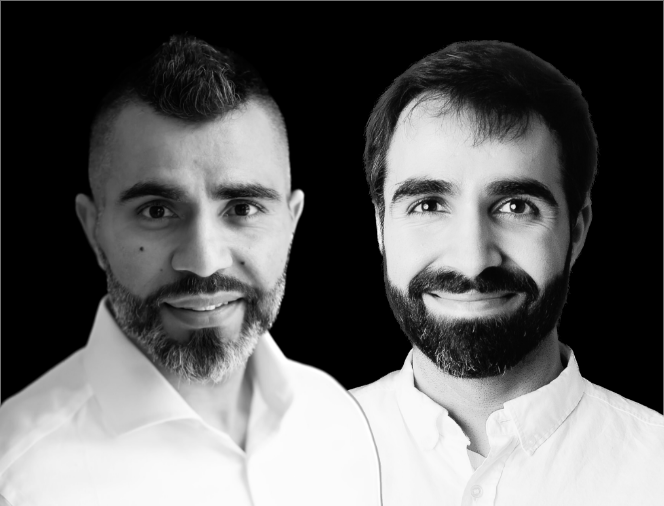


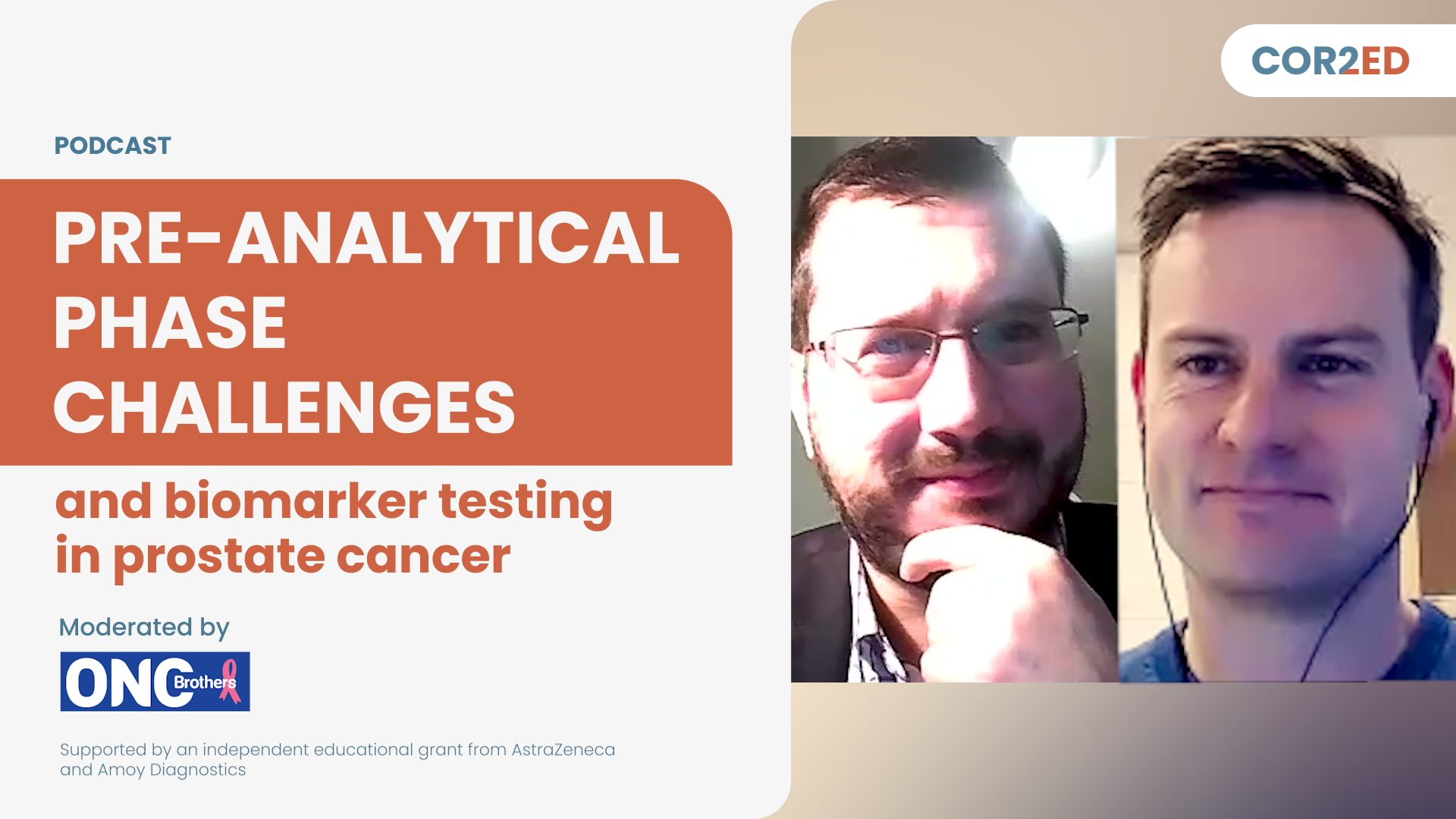

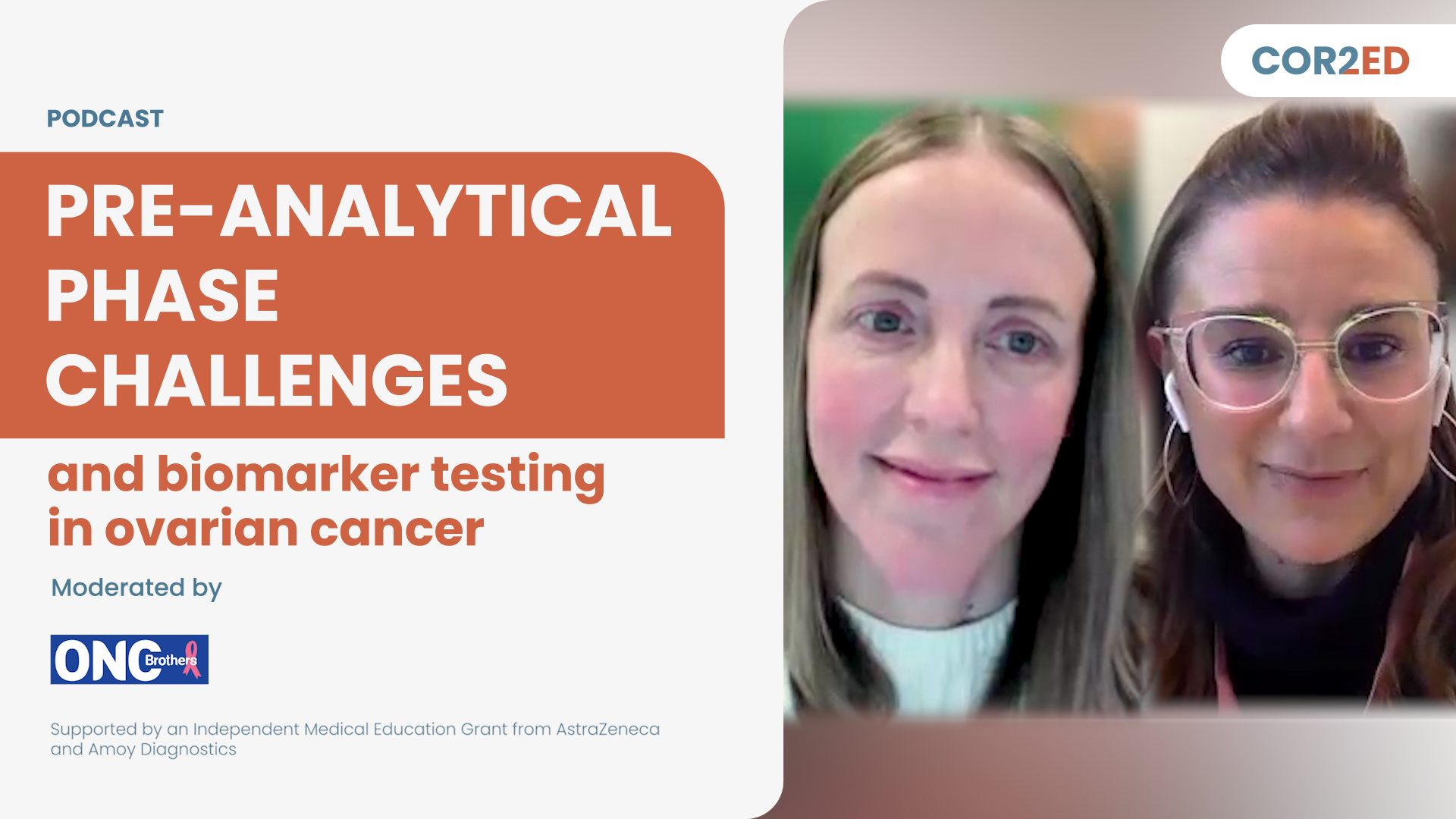

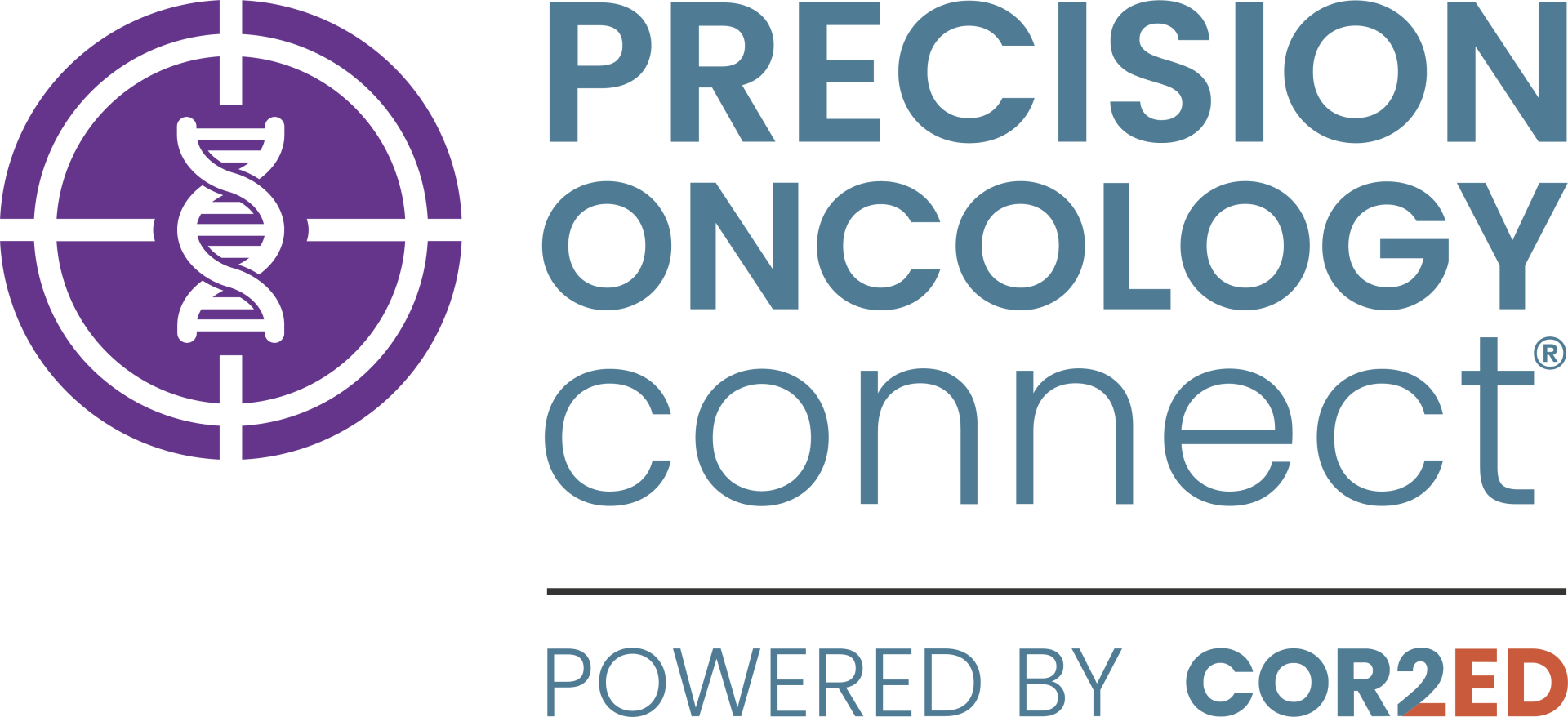

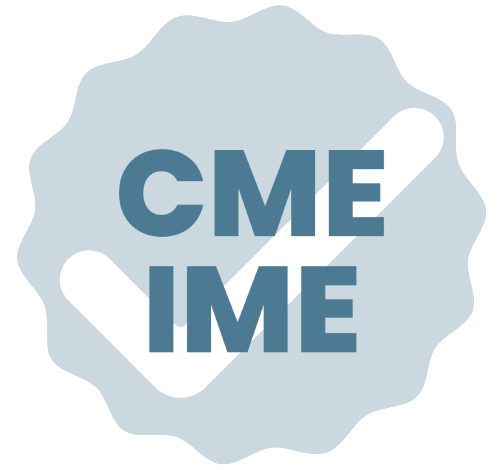


 5 MIN
5 MIN
 Dec 2025
Dec 2025 
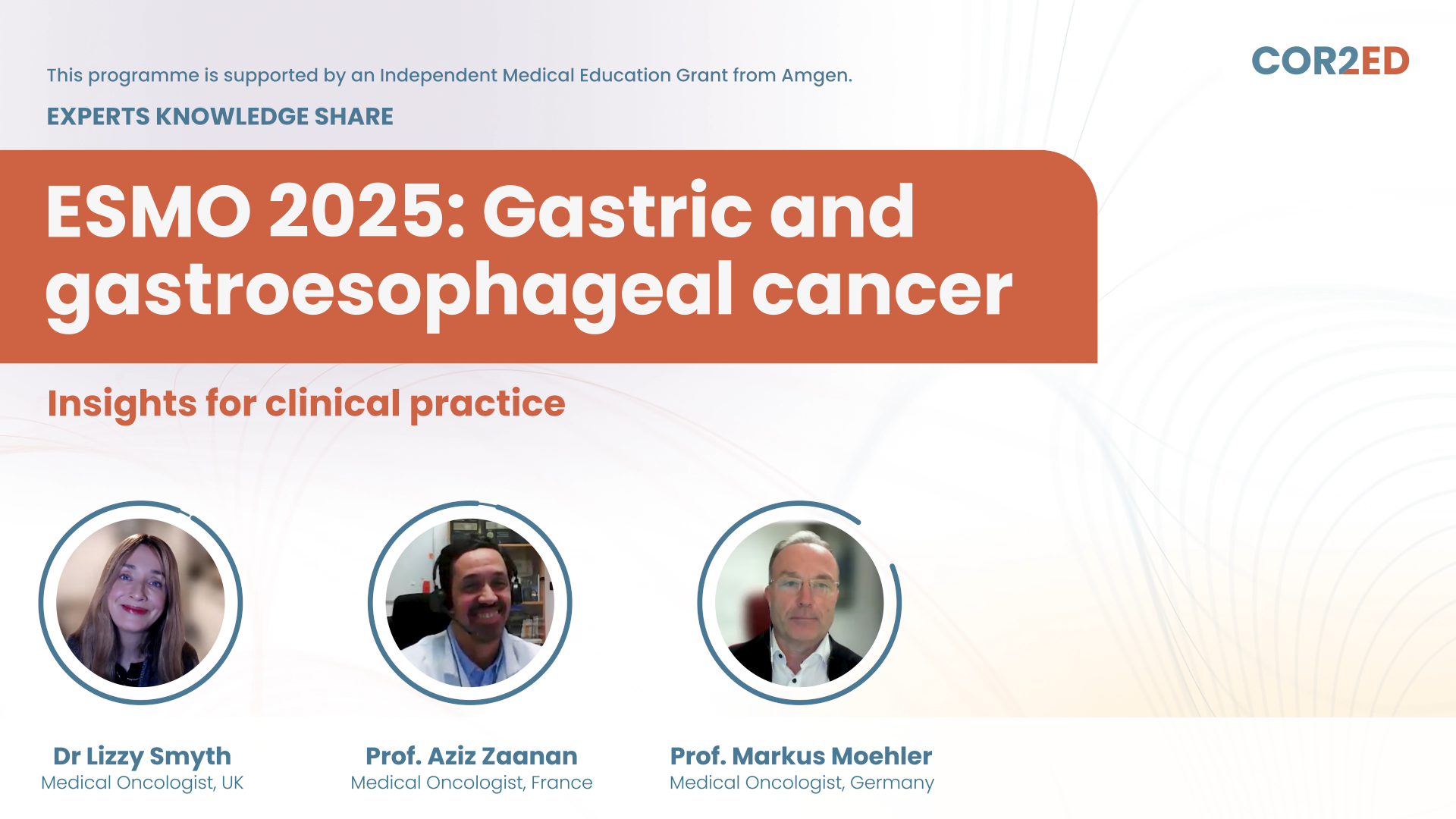

 Downloadable
Downloadable 